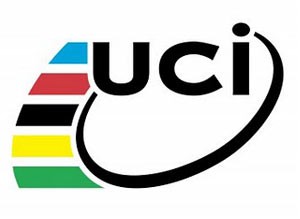Ernst & Young report “shows that cycling is in a healthy position and resisting the effects of the current global economic downturn”; many races not so lucky however
 A report from auditors Ernst & Young, commissioned by the International Cycling Union (UCI) shows that, while the number of top flight men’s teams remains relatively stable, there has been an increase in total budgets of 36.5% since 2009. According to the sport’s governing body: “this result shows that cycling is in a healthy position and resisting the effects of the current global economic downturn.”
A report from auditors Ernst & Young, commissioned by the International Cycling Union (UCI) shows that, while the number of top flight men’s teams remains relatively stable, there has been an increase in total budgets of 36.5% since 2009. According to the sport’s governing body: “this result shows that cycling is in a healthy position and resisting the effects of the current global economic downturn.”
According to the report, there was a total of 39 top-flight teams – made up of 18 first division ProTour and 21 second division Professional Continental teams – in 2009, with a total budget of €235 million. In 2012, the number of teams has remained relatively static, having risen by one to 40 – with 18 ProTeams once again, but now with 22 Professional Continental – but the overall budget is now €321 million.
This represents a total increase of €86 million, or 36.5%.
Within the overall total increase, the average annual salary for a rider in one of the sport’s top teams has risen from €190,000 in 2009, to €264,000 in 2012; this increase eclipses that of overall sponsorship, representing a rise of 38.9%.
“It is very pleasing to see that the men`s professional cycling is prospering in these difficult times,” said UCI president Pat McQuaid. “Most of the cyclists within the professional peloton can live very well, or at least comfortably, on their salaries thanks to the support of sponsors who invest in this sport. These sponsors are attracted by the extremely good visibility cycling provides them throughout the year.”
While the raw total figures of the report show that there is more money coming into cycling than ever before, just as in most other sports, the revenue is far from evenly distributed. Many of the smaller ProConti teams reported financial problems after the downsizing or loss of sponsors; Spanish team Andalucía, for example, lost its co-sponsor Caja Granada at the end of last season, and almost faced closure.
While the general picture looks rosy for the teams however, the same cannot be said for a number of races; even well established ones. Earlier this month it was announced that this year’s Giro di Sardegna would be cancelled because of the organiser’s problems in securing funding; while this weekend it was revealed that even races in the UCI’s flagship WorldTour could be under threat, as the Vuelta a Pais Vasco and the Clasica San Sebastian – both run in the Basque region of Spain – are under threat for similar reasons.
In addition, while this report shows that, overall, there is more money than ever in the teams at the top level of the men’s sport, most women’s teams are still forced to operate at barely more than amateur level.